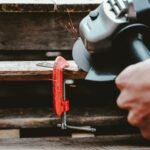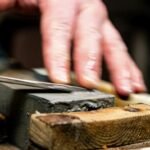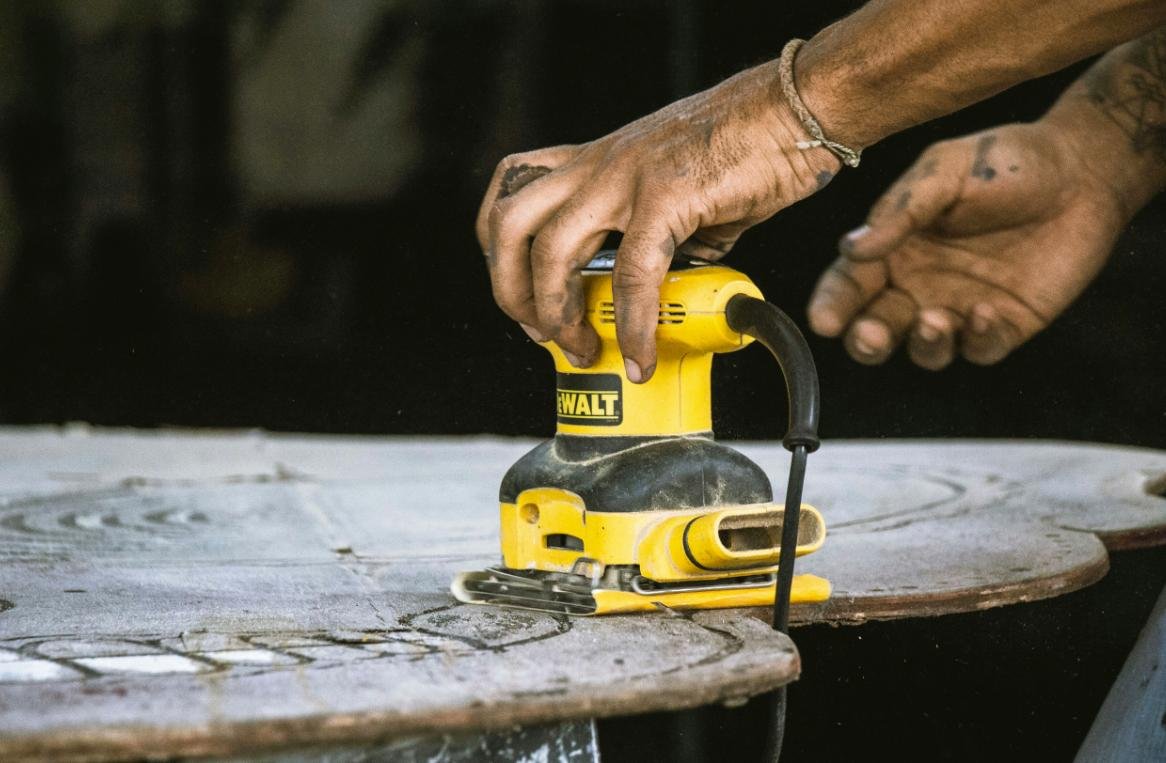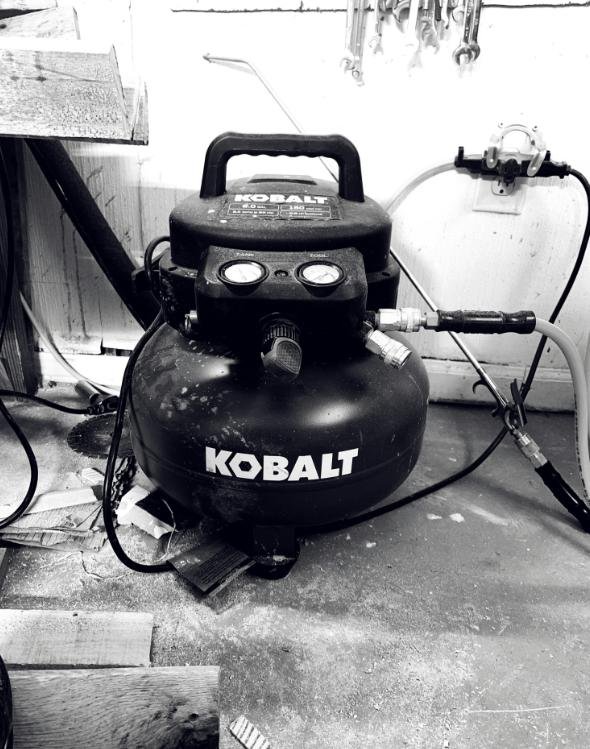Introduction to Sanding Hardwood Floors
Sanding hardwood floors is a vital process that plays an essential role in maintaining the beauty and integrity of hardwood surfaces. Over time, hardwood floors can endure wear and tear, leading to scratches, dents, and an overall dulled appearance. This deterioration can diminish the aesthetic appeal of a home and necessitates intervention to restore its original charm. Consequently, many homeowners embark on the sanding process as a means to rejuvenate their floors and extend their lifespan.
One primary reason for sanding hardwood floors is to remove surface imperfections. Scratches and scuffs, often the result of foot traffic, furniture movement, and general use, can accumulate over the years. Sanding effectively eliminates these blemishes, creating a smooth finish that enhances the overall appearance of the wood. Additionally, this process can help level uneven surfaces that may have developed due to settling or changes in humidity, ensuring a safer and more visually appealing environment.
Preparing for refinishing is another critical aspect of sanding hardwood floors. When homeowners opt to refinish their floors, sanding serves as the preparatory step that allows new finishes or stains to adhere properly. A clean, sanded surface ensures that the refinishing products penetrate the wood effectively, resulting in a finish that enhances durability and visual appeal. Moreover, regular maintenance through sanding can lead to a more sustainable approach to flooring care, postponing the need for costly replacements.
In conclusion, understanding the significance of sanding hardwood floors is paramount for any homeowner looking to maintain their property’s value and aesthetic. By recognizing the various reasons for sanding, they can take proactive measures to ensure their hardwood floors remain beautiful and resilient for years to come.
Types of Sanders Available
When undertaking a project involving hardwood floor sanding, it is crucial to understand the various types of sanders that are available in the market. The right choice of sander can significantly impact the quality of the finish and the efficiency of the process. Among the commonly used sanders for hardwood floors are drum sanders, orbital sanders, and belt sanders, each of which has specific mechanics and applications.
Drum sanders are known for their powerful performance, making them suitable for large areas that require deep sanding. This type of sander operates using a rotating drum covered with sandpaper, which effectively smooths out rough spots and removes layers of finish quickly. Because of their strength, drum sanders are ideal for refinishing hardwood floors that have seen significant wear and tear. However, they require careful handling to avoid excessive removal of wood, which can lead to flattening or damage of the floor.
Orbital sanders are another popular option for sanding hardwood floors. Unlike drum sanders, these use a square or rectangular sanding pad that moves in an orbital motion. This unique mechanism allows them to provide a finer finish and reduces the risk of gouging the wood. Orbital sanders are typically easier to maneuver and are well-suited for detail work and fine sanding tasks. They are an excellent choice for users who wish to achieve a smooth surface with less aggressive sanding.
Belt sanders, characterized by a continuous loop of sandpaper that moves around two drums, are effective for flattening and removing material from hardwood floors. While they offer a robust sanding experience, they require a steady hand to operate effectively and avoid marks on the surface. Belt sanders can be beneficial for initial sanding stages but require a follow-up with a finer grit sander for the best results.
Choosing the Right Sander: Key Factors to Consider
When selecting a sander for hardwood floors, several key factors must be taken into account to ensure optimal performance and results. Firstly, the size of the area to be sanded plays a significant role in determining the appropriate type of sander. For larger spaces, a more robust and powerful sander, such as a drum sander, may be required. This equipment can effectively cover extensive areas promptly, making it ideal for professional use. Conversely, for smaller rooms or tight spaces, a handheld or orbital sander may suffice, allowing users to navigate around furniture and edges efficiently.
The condition of the floor is another crucial factor to consider. Floors with deep scratches, dents, or significant wear will benefit from a more aggressive sanding approach, which may necessitate the use of a heavier-duty sander. For surfaces that are relatively well-maintained, a gentler, less aggressive sander can help preserve the wood’s quality while still achieving a smooth finish.
User experience level also plays a critical role in the selection process. Novice users might find simpler models with user-friendly features, such as automatic dust collection and lightweight designs, more manageable. These machines often come with intuitive interfaces that help beginners achieve satisfactory results without overwhelming complexity. Experienced users, on the other hand, may prefer advanced sanders that offer higher levels of control and customization, enabling them to execute detailed refinishing tasks with precision.
Moreover, dust collection types and maintenance requirements should not be overlooked. Effective dust collection mechanisms are essential to minimize airborne particles during sanding processes, thus contributing to a cleaner work environment. Regular maintenance of the sander enhances longevity and performance, making it an essential consideration for both professional craftsmen and DIY enthusiasts.
Benefits of Using a Drum Sander
The drum sander is a highly regarded tool among both professionals and DIY enthusiasts for its efficiency and effectiveness in refinishing hardwood floors. Its design incorporates a cylindrical drum that holds sandpaper, making it particularly adept at removing old finishes and imperfections from the wood surface. One of the primary advantages of using a drum sander lies in its capability to quickly strip away layers of finish or abrasion from the wood, thereby significantly reducing the time and effort required for floor refinishing projects.
In addition to its efficiency in removing old finishes, the drum sander excels in leveling uneven floors. When equipped with the appropriate grit sandpaper, the tool can effectively smooth out any inconsistencies, leading to a more uniform surface. This characteristic is especially valuable when dealing with older hardwood floors that may have experienced warping or settling over time.
However, while the advantages of a drum sander are substantial, it is imperative to use the tool correctly to avoid damaging the wood. To achieve optimal results, operators should begin with a coarser grit sandpaper, progressively moving to finer grits as they refine the surface. It is also advisable to maintain a steady, controlled pace when operating the sander, as excessive pressure or prolonged use in one area can lead to gouges or indentations. Additionally, ensuring that the floor is clean and free of debris before sanding will help prevent scratches and improve the overall finish.
For those contemplating refinishing their hardwood floors, understanding the benefits and proper usage of a drum sander will greatly enhance the success of the project. This tool’s ability to effectively restore and revitalize hardwood floors makes it a valuable addition to any flooring toolkit.
Why Choose an Orbital Sander?
The choice of a sander for hardwood floors is critical to achieving a smooth and professional finish, and among the various options available, the orbital sander stands out for several compelling reasons. Firstly, orbital sanders are designed to be user-friendly, making them suitable for both experienced professionals and novice DIY enthusiasts. The random orbital motion helps to prevent swirl marks, a common issue with other sanding tools, ensuring a consistent and smooth surface on hardwood floors.
Another advantage of the orbital sander is its versatility. It can be used for various tasks, including sanding, polishing, and finishing, making it a multi-purpose tool in any woodworker’s arsenal. Unlike belt sanders, which can easily cause gouges in softwood or hardwood if not handled properly, orbital sanders provide a gentler touch, reducing the risk of damage to the wood. This quality makes them particularly valuable for refinishing and restoring hardwood floors, where preserving the integrity of the wood is crucial.
When comparing the orbital sander to other types, such as drum or belt sanders, the orbital model excels in several situations. For instance, if a homeowner needs to sand intricate areas or edges, an orbital sander’s compact size and maneuverability allow for precision that is often lacking in larger belt sanders. Additionally, orbital sanders generally produce less noise and are lighter, resulting in a more comfortable experience during prolonged use. Overall, the orbital sander emerges as an exceptional choice for anyone looking to tackle hardwood floor projects, combining efficiency, safety, and superior results.
The Case for Belt Sanders
Belt sanders are a powerful tool used extensively in the field of woodworking, particularly when it comes to sanding hardwood floors. One of the primary strengths of a belt sander is its ability to cover large areas efficiently and quickly. This capability makes it an excellent choice for any project requiring the removal of old finish or leveling the surface of a hardwood floor.
When using a belt sander, it is crucial to understand its operational mechanics. The sander operates with a continuous loop of sandpaper that moves over two drums. The designated grit size can vary depending on the project requirements—coarser grits such as 40 or 60 are recommended for initial sanding, while higher grits like 80 or 120 are suited for finer finishing. A methodical approach to sanding is essential; moving the sander in a straight line while maintaining consistent speed minimizes the risk of gouging the wood. Furthermore, lifting the sander at the end of each pass prevents deep scratches.
Belt sanders are particularly advantageous in situations where significant material removal is necessary, such as refinishing an old floor or correcting imperfections in the wood. Due to their robust design, they excel in flattening surfaces and can handle tougher materials. However, users should be cautious of their aggressive nature, as this can lead to deeper scratches or damage if not handled properly. Ensuring proper tension on the sandpaper and selecting the right grit for different stages of the project will significantly enhance the outcome.
In summary, belt sanders offer a blend of power and efficiency that can make them an invaluable tool for hardwood floor refinishing. Their ability to deliver high performance in large tasks, combined with careful handling, sets them apart in the array of sanding options available to homeowners and professionals alike.
Recommended Sanders for Hardwood Floors
When it comes to selecting the right sander for hardwood floors, several models stand out due to their performance, ease of use, and overall value. Three notable options include the Bona Edge, the Festool Rotex RO 150, and the DeWalt DWE6423K. Each of these sanders has unique features that cater to various sanding needs.
The Bona Edge is particularly effective for edge sanding. Its lightweight construction and ergonomic design allow for easy maneuverability, making it an excellent choice for detailed work along walls and corners. Moreover, it boasts a vacuum attachment for dust collection, which contributes to a cleaner work environment. However, its relatively high price point may deter some users.
On the other hand, the Festool Rotex RO 150 offers versatility, functioning as both a random orbit sander and a rotary sander. It excels in removing old finishes and smoothing surfaces. The variable speed settings allow for customized use, making it suitable for various hardwood types. One drawback is its higher learning curve, as mastering its controls can take time.
Lastly, the DeWalt DWE6423K is a budget-friendly option that provides reliability and performance. This sander features a powerful motor and a hook-and-loop sanding pad for quick paper changes. While it may lack some advanced features found in pricier models, it undeniably fulfills basic sanding needs. However, its dust collection system could be more efficient.
In addition to the sanders, investing in quality sanding pads and a good dust mask can significantly enhance the sanding process. Proper protective gear is crucial for safeguarding your health, while high-quality pads ensure effective results. Always evaluate your flooring’s condition and choose a sander that best fits your specific needs.
Safety Tips for Sanding Hardwood Floors
Sanding hardwood floors is an essential process that enhances both the aesthetics and durability of wooden surfaces. However, it also comes with potential hazards that necessitate stringent safety measures. First and foremost, wearing the appropriate safety gear is vital. This includes safety goggles to protect your eyes from dust and debris, a dust mask or respirator to filter harmful particles from the air, and knee pads to provide comfort while working on the floor. Ear protection is also recommended, particularly when using loud power tools such as drum sanders or orbital sanders.
In addition to personal protective equipment, ensuring a well-ventilated workspace is crucial. Open windows and doors to promote airflow, and consider using fans to help disperse dust and fumes that may accumulate during the sanding process. Proper ventilation not only improves air quality but also minimizes health risks associated with dust inhalation.
Before commencing the sanding process, it is advisable to remove any obstacles from the workspace. This includes furniture, rugs, and decorative items, which can become tripping hazards or could be damaged during the operation. Moreover, checking the sanding equipment for any defects or malfunctions prior to use is imperative; this ensures that the tools work efficiently and minimizes the risk of accidents.
Another essential practice is to stay alert and focused while sanding. Avoid distractions such as cell phones or loud music that could divert your attention. It is also recommended to work in teams when possible, allowing one person to operate the sander while another supervises, contributing to a safer environment.
By adhering to these safety tips and best practices, you can create a safer atmosphere during the sanding of hardwood floors, ultimately achieving a smooth and successful refinishing process.
Conclusion: Choosing the Best Sander for Your Needs
Determining the best sander for hardwood floors is a crucial step in any flooring project, as it directly influences the overall finish and durability of your floors. Throughout this guide, we have explored various types of sanders, from drum sanders to orbital sanders, each with its unique features and benefits. Understanding these distinctions helps you make a more informed choice that aligns with your specific requirements.
When selecting the most suitable sander, consider the scope of your project. For large areas, a drum sander is typically recommended due to its efficiency and powerful sanding capabilities. However, for smaller spaces or intricate details, a palm sander or orbital sander might prove more beneficial. Additionally, assessing the hardness of your hardwood floors can also guide your decision, as some sanders work better on particular wood types.
Moreover, evaluating your building skills is pivotal. If you are a novice, you may want to opt for a user-friendly sander that minimizes the chance of errors during the sanding process. Conversely, if you are a seasoned professional, investing in higher-end models may provide the versatility and precision you desire for more complex projects. Ultimately, personal circumstances such as budget and time availability should also factor into your choice.
As you move forward with your sanding projects, be confident in applying the knowledge gained from this guide. By carefully considering the evaluating criteria mentioned, you can select the best sander for your hardwood floors and achieve a stunning result. Take action and enjoy the results of your hard work, transforming your space effectively and efficiently.







